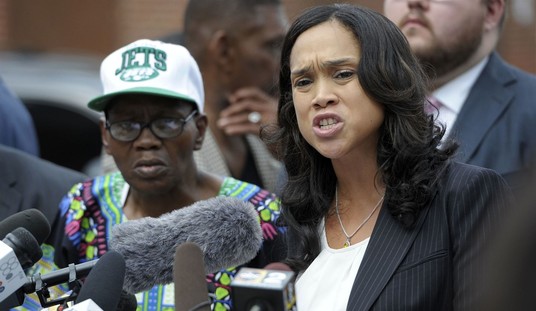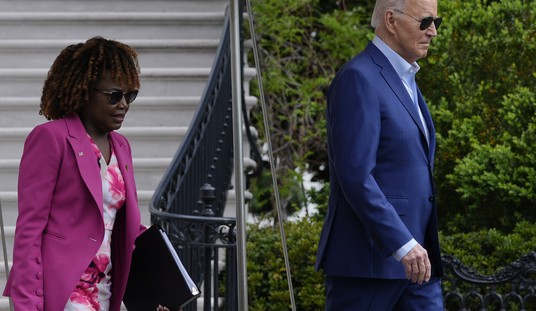I know it probably seems as if I’ve developed a bit of a dim view of the justice system of late, though I’m really trying to maintain a positive outlook. I previously expressed some doubts about precisely who our system of rights and due process are serving with regards to Lois Lerner. That situation struck me as a person who had been accused of no crime, but who was taking advantage of every nook and cranny of the justice system to thwart even the possibility of future charges as if she already were. The legal beagles, including my friend and attorney Doug Mataconis, have had their say on it and apparently that’s the way of the world in our courts. But how about a different case where someone already has been accused of a crime, such as that of George Zimmerman in Florida?
I find it improbable beyond words that you’re not already familiar with the case of Zimmerman and Trayvon Martin, so I won’t waste your time with an update of the whole affair here. But there was a recent revelation as we approach the start of the trial which definitely caught my attention. It involved a request on the part of the defense to introduce certain items into evidence which would seem to paint Martin as something other than the Skittles purchasing pedestrian the state claims he was.
Lawyers for George Zimmerman, who is charged with second-degree murder in the killing of Trayvon Martin, will be barred from mentioning Mr. Martin’s marijuana use, history of fights or high school suspension during opening arguments in Mr. Zimmerman’s trial, which begins June 10.
At a hearing Tuesday in a Seminole County court, Circuit Judge Debra Steinberg Nelson denied a string of defense motions concerning evidence that was intended to portray Mr. Martin as a troubled teenager with a propensity for fighting and an interest in guns. Prosecutors argued that such evidence had nothing to do with Mr. Martin’s death.
All of this background material – listed at the link – will be inadmissible, at least during opening statements and perhaps for the duration of the trial, depending upon how the prosecution seeks to play their hand. My immediate reaction was to wonder how that happened? What of the importance of offering the defense every opportunity to portray their client in the best light, and of the bedrock assumption that each defendant is presumed innocent until proven guilty? Is not a history of potentially violent and illegal activity relevant to how Martin might have reacted that day?
There are postings from social media containing very disturbing admissions, texts and e-mails. Is this not evidence? Should this not be available to the jury if they are to give the defendant every chance and the assumption of innocence? Once again, according to Doug, apparently not.
The question, though, is whether evidence like this should be admissible at trial.1
Perhaps the most important thing to understand about how trials work, especially criminal trials, is that not all “evidence” is admissible evidence. Not every piece of information that might somehow be tangentially relevant to a criminal case2 is admissible at trial. The classic example that most lay people are familiar with is hearsay evidence, which essentially refers to evidence of statements made outside of a courtroom setting that are, for one reason or another, not subject to cross-examination. There are literally dozens of exceptions to the hearsay rule that allow such statements to be admitted into evidence under the right circumstances, but the general rule is that if a party wishes to present evidence of something that someone who isn’t available to testify, for whatever reason, then that evidence is inadmissible unless an exception applies.
In the Zimmerman case, though, we’re dealing with the somewhat more complicated issue of character evidence. Quite obviously, Zimmerman’s hoped, and if given the opportunity during the trial still hope, to use evidence about Trayvon Martin’s past to establish that he was a violent person, thus reinforcing the defense theory of the case that Zimmerman was attacked by a young guy who he saw roaming around his neighborhood. To many lay people, including many people that I discussed this issue with on Twitter and Facebook yesterday evening, it seems self-evident that any evidence that shows that Trayvon Martin was a “thug” is relevant to Zimmerman’s defense and therefore ought to be something that the jury should be able to consider. As a general rule, evidence regarding the character of the victim, or the Defendant, is considered inadmissible unless it somehow becomes relevant to the actual facts at issue in the case. The most well-known example of this is the body of law that has determined, largely correctly, that the sexual history of a woman claiming that she was raped is inadmissible in a rape trial.
(For the record, I was one of the “lay people” on Twitter referenced above. It went on for quite a while.)
It’s a long explanation, so you should click through to get the entire thing, but I don’t care for it a bit. It seems to me, particularly in the two cases we are drawing parallels between here, that there is a rather large, gray area when it comes to when the rules do or do not apply in giving the accused the benefit of the doubt. We’re talking about something that happened with (I believe) no other first hand witnesses. There is precious little to go by in terms of hard evidence to determine what happened during the altercation aside from one sided phone records. How is background information like this not applicable?
But I suppose the legal community has once again spoken and some of us laypersons are simply too dense to understand the law. But that doesn’t mean I have to agree or like it.








Join the conversation as a VIP Member